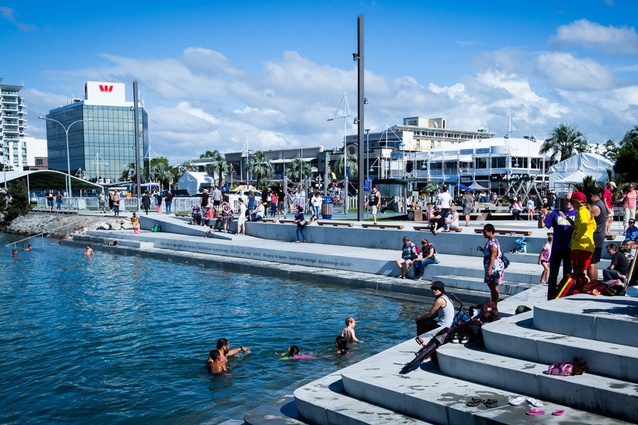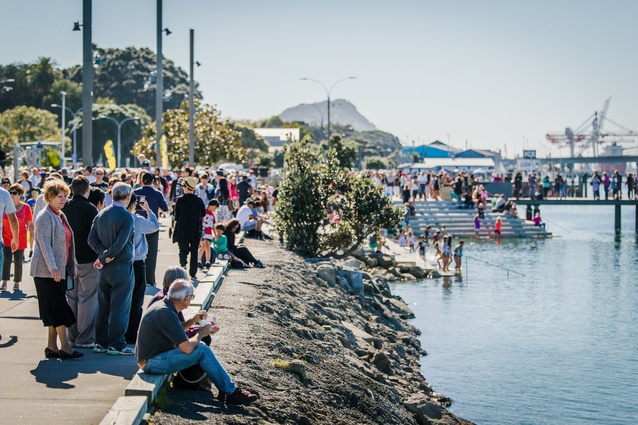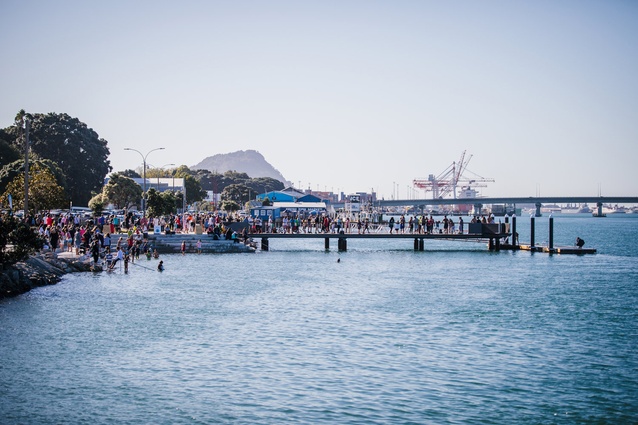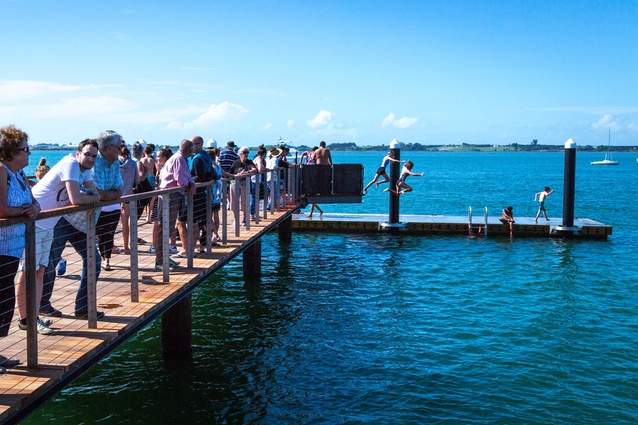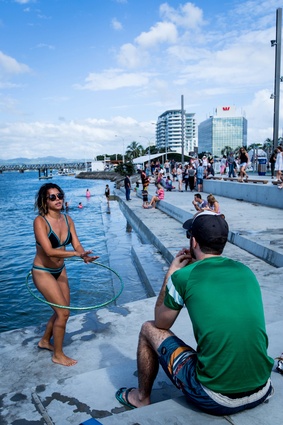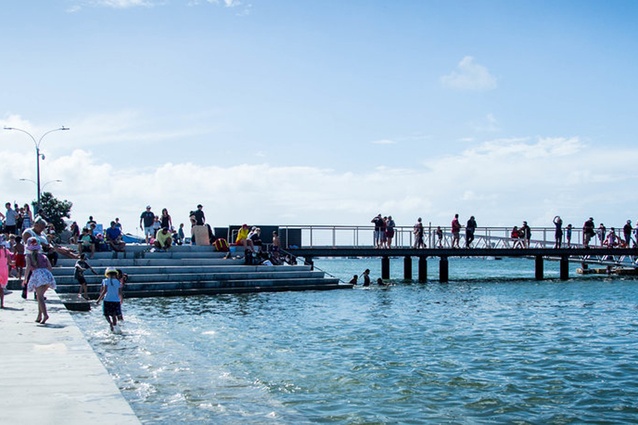Tauranga’s waterfront renaissance
Locals and visitors to Tauranga are making the most of the city’s first summer with a new waterfront feature – the tidal steps.
The development’s created a type of amphitheatre where people can sit to watch the performance of life, be it children swimming, teenagers water bombing or boats docking at the new pier.
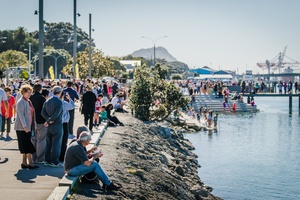
Opened in May last year, the steps fold down into Tauranga Harbour from The Strand, reconnecting people with the waterfront and city centre. The $3.2 million steps, bombing platform and pier have been enthusiastically received by locals since day one, even though they opened in winter. And this summer’s sometimes glorious weather has only added to their popularity.
“What are we most proud of? That we have managed to work through all the difficult technical issues and budget constraints and still come up with something that fits contextually and resonates from a design point of view,” says the landscape architect on the project, Henry Crothers, of LandLAB.
“The project had deliberately sought to engage with the community in a meaningful and innovative way, asking them what they wanted instead of telling them what they were going to get.
“I think it’s set a new benchmark for a whole range of other city centre projects that are going to happen. There’s a real renaissance of the city centre going on in Tauranga and a desire to reconnect the city with its waters edge.”
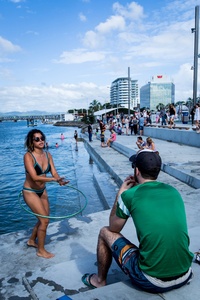
There were a range of technical and safety issues to work around, with a still-used railway line running through the project. And of course there was some complex hydrological issues.
The seabed needed dredging and reprofiling to allow small boats to use the pier.
With the steps themselves LandLAB wanted to create sculptured topography that provided for a range of occupational opportunities and ways to easily dip your toes into the water; a type of urban beach.
“We worked with the shape of the existing seawall,” Crothers say. “We’ve exaggerated and layered it to make a defined and enclosed space suited to occupation and gathering. We wanted to clearly define this as the centre of the waterfront.”
Etched into the stairs is a karakia and story about Tauranga. Different parts of it are revealed as the tide ebbs and flows.
Crothers says they worked closely with artist Elliot Collins on this. The karakia tells the story of how the mountain arrived at its present home at the water’s edge and how the features of the land and harbour were formed on its journey. It was approved for use by local tangata whenua. It’s been painted in different colours which are based on local tradition that reinforce the story.
The addition of a built-for-purpose bombing platform has proved a real hit.

“We knew the community wanted it because they told us. But with these activities all to often someone’s standing there wagging their finger saying ‘you can’t go jumping off this’. So by designing a purpose built platform it manages the situation and safety concerns. We know the water’s deep enough.”
The waterfront development’s been receiving rave reviews. One community leader told the Bay of Plenty Times it had been a “game-changer” for downtown businesses in terms of flow-on effects.
“It’s great that people are saying such positive things,” Crothers says. “There’s a new energy and appeal about the city centre and a range of reasons to come here.”
The project is part of a wider $8 million plan to upgrade the central city over five years.
This article first appeared on the Landscape Architecture Aotearoa website, which is published by the New Zealand Institute of Landscape Architects (NZILA).

